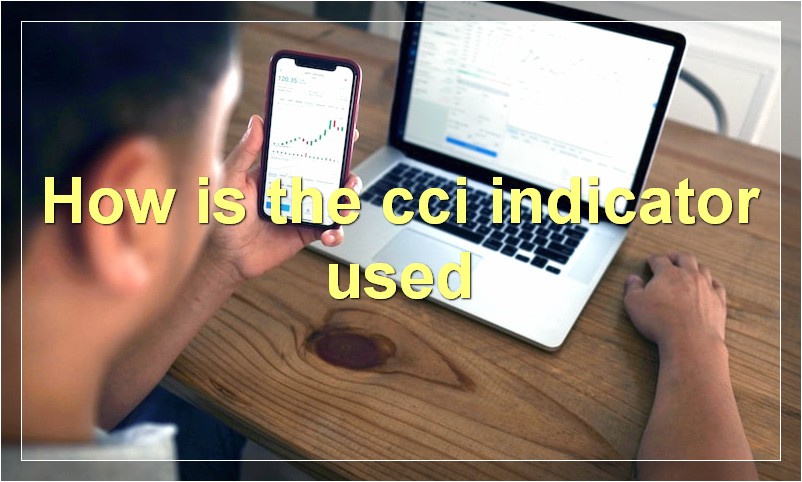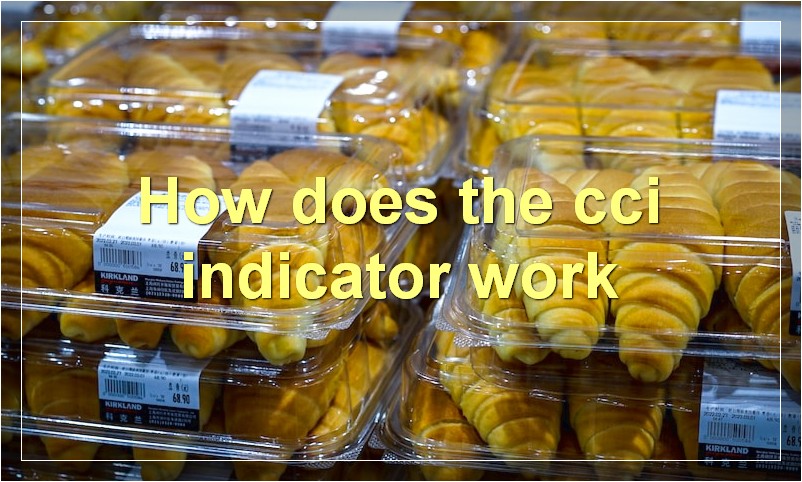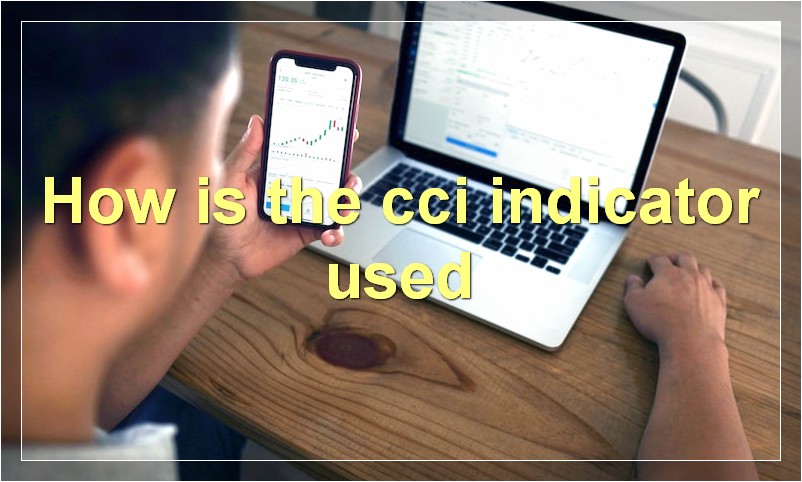If you’re looking for a comprehensive guide to the CCI indicator, look no further! In this guide, we’ll cover everything you need to know about the CCI indicator, from what it is and how it works, to how you can use it to improve your trading.
What is the cci indicator
The cci indicator is a technical analysis tool that measures the strength of a market trend. It is based on the concept of momentum, and is used to identify whether a market is overbought or oversold.
The cci indicator is calculated using the following formula:
CCI = (Typical Price – 20-period SMA of TP) / (.015 x Mean Deviation)
where,
TP = (High + Low + Close)/3
Mean Deviation = Average of the absolute deviations of TP from 20-period SMA of TP.
The cci indicator can be used in conjunction with other technical indicators, such as support and resistance levels, to generate trading signals. A buy signal is generated when the cci indicator crosses above -100, and a sell signal is generated when it crosses below 100.
How is the cci indicator used

The cci indicator is used to identify potential overbought and oversold conditions in the market. It can also be used to help confirm trends or trend reversals.
What are the benefits of using the cci indicator
The cci indicator is a popular technical indicator that is used by many traders to help identify potential trading opportunities. The cci indicator stands for commodity channel index and was developed by Donald Lambert in 1980.
The cci indicator is based on the premise that commodities tend to move in cycles and that these cycles can be identified and used to generate trading signals. The cci indicator attempts to identify these cycles and provide trade signals based on them.
There are many different ways that the cci indicator can be used but some of the most common uses include identifying overbought and oversold conditions, identifying potential trend reversals, and identifying potential support and resistance levels.
The cci indicator can be a valuable tool for traders who are looking to gain an edge in the market. While the indicator is not perfect, it can provide traders with valuable information that can be used to make informed trading decisions.
How can the cci indicator be improved
The cci indicator can be improved by using a longer timeframe and taking into account the price action leading up to the point of entry.
What are the drawbacks of the cci indicator
The cci indicator is a momentum oscillator that measures the strength of a stock’s recent price performance. The cci indicator can be used to identify overbought and oversold conditions, as well as to spot potential reversals. However, the cci indicator has some drawbacks.
First, the cci indicator is not always accurate. It can generate false signals, especially in choppy markets. Second, the cci indicator is a lagging indicator, meaning it will only tell you what has happened in the past, not what is happening in the present or future. Finally, the cci indicator is only one technical tool and should not be used alone to make investment decisions.
How does the cci indicator work

The CCI indicator, short for commodity channel index, is a momentum based indicator used by traders to identify potential overbought and oversold conditions in the market. The CCI indicator was originally developed by Donald Lambert in 1980 and is typically used on commodities, but can also be applied to other markets such as stocks and forex.
The CCI indicator works by calculating the difference between the current price and the average price over a certain period of time. This difference is then divided by the mean deviation over the same period of time. The result is plotted as a line on a separate window below the price chart.
Traders use the CCI indicator to identify potential overbought and oversold conditions. A reading above +100 is considered overbought, while a reading below -100 is considered oversold. However, it is important to note that the CCI indicator can remain overbought or oversold for extended periods of time, so traders will often use other technical indicators in conjunction with the CCI indicator to confirm trading signals.
If you are interested in learning more about the CCI indicator or other technical indicators, please visit our website at www.example.com.
What is the history of the cci indicator
The CCI indicator was developed in the late 1970s by Dr. Alan Hull. It was designed to identify cyclical turns in commodities, but can also be used in other markets. The CCI measures the current price level relative to the average price level over a specific time period. When the CCI is above 100, it indicates that prices are higher than the average, while a reading below 100 indicates that prices are lower than the average.
The CCI indicator can be used in a number of different ways, but one common use is to look for readings above or below 100 as potential signals of a change in trend. For example, if prices are trending higher and the CCI moves above 100, it could be a sign that prices are starting to move too fast and may be due for a correction. Similarly, if prices are falling and the CCI moves below 100, it could be a sign that prices have further to fall.
While the CCI indicator can be useful in identifying potential trend changes, it is important to remember that it is only one tool in an investor’s toolbox. As with any indicator, it should not be used alone but rather in conjunction with other technical indicators and fundamental analysis.
Who created the cci indicator
The CCI indicator was created by John Bollinger in 1980. Bollinger originally developed the Bollinger Bands® technique for stock market analysis. The CCI is a momentum oscillator that measures the difference between a security’s current price and its past average price. The CCI fluctuates above and below a zero line as the security’s price changes. A reading of +100 indicates that the security is trading at its highest price in the last 200 days; a reading of -100 indicates the security is trading at its lowest price in the last 200 days.
What are some real-world applications of the cci indicator
There are many real-world applications for the cci indicator. Some of these include:
– identifying potential trend reversals
– spotting overbought/oversold conditions
– measuring market momentum
– determining support and resistance levels
What are some alternate uses for the cci indicator
The cci indicator is a versatile tool that can be used for a variety of purposes. Some common alternate uses for the cci indicator include identifying overbought and oversold levels, spotting trend reversals, and measuring market momentum.

